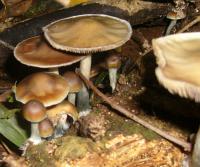Hey fellow nature lovers! checkout this lovely pic I took a couple days ago.... my first rainforest experience... i was quite obviously VERY stoked with this little discovery!
What would u well educated people identify these beautiful specimens as? I'm well aware it has some special 'magic' about it just curious as to the species.... I am personally use to seeing subs back in SA
Hey fellow nature lovers! checkout this lovely pic I took a couple days ago.... my first rainforest experience... i was quite obviously VERY stoked with this little discovery!
What would u well educated people identify these beautiful specimens as? I'm well aware it has some special 'magic' about it just curious as to the species.... I am personally use to seeing subs back in SA
This was taken in North-Eastern NSW

Edited by herbal_hindsightShare this post
Link to post
Share on other sites